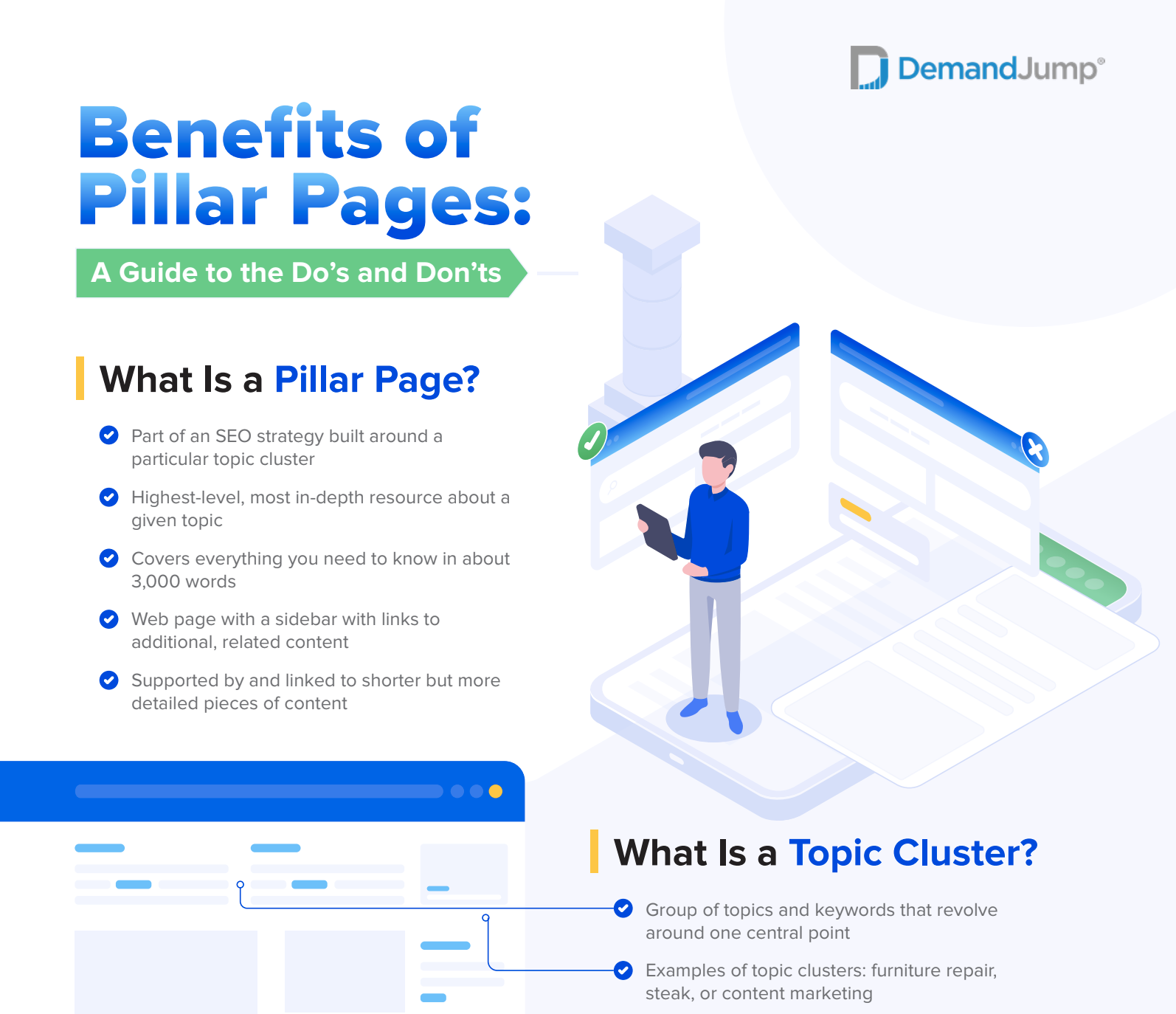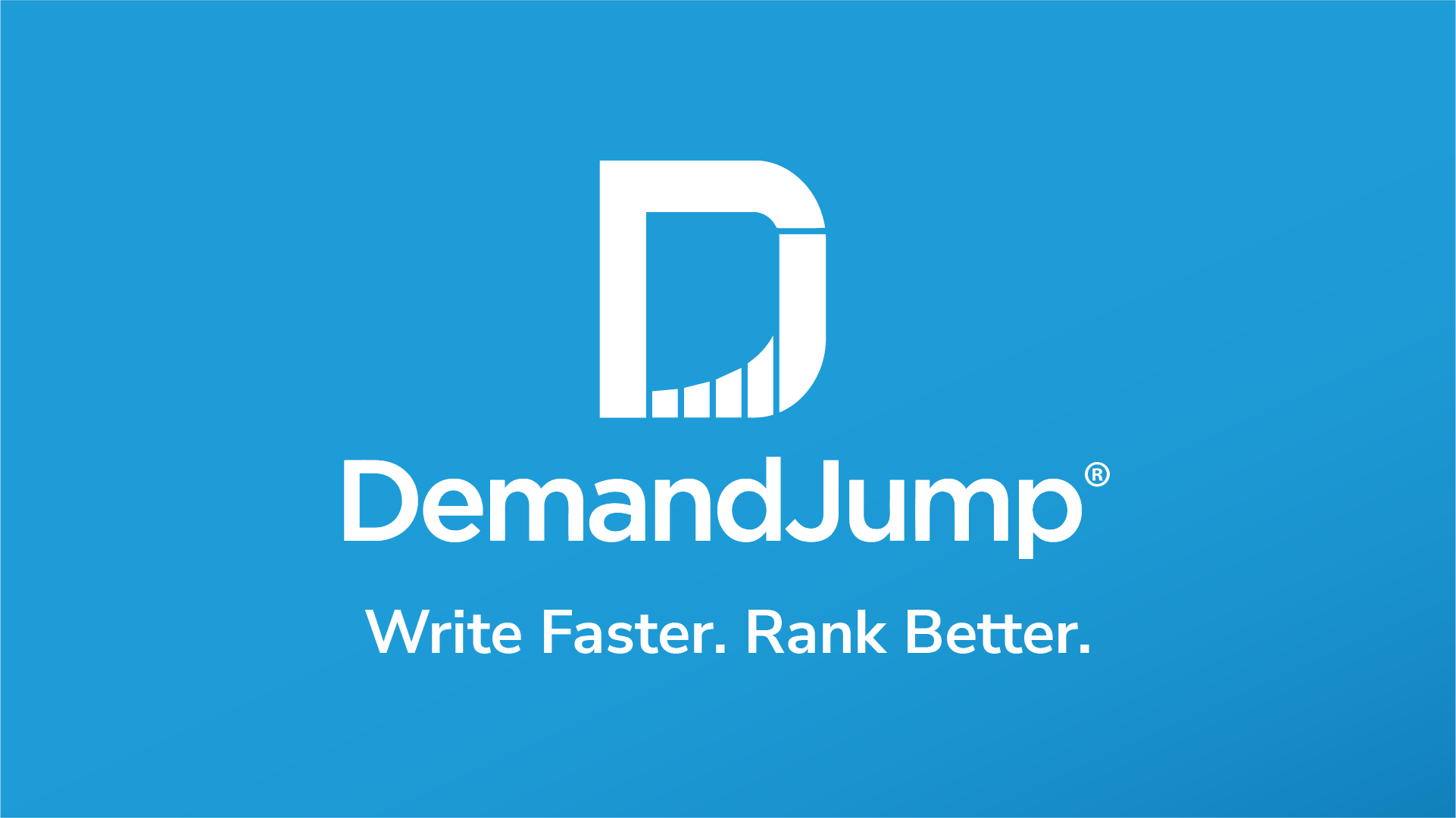Marketers and marketing teams are, like all humans, creatures of habit. If you thrive in the marketing world, you have likely operated under the parameters of account-based marketing (ABM). While ABM does have its place, our team at DemandJump is here to introduce everyone in the marketing world to the new giant—pillar-based marketing (PBM). Don't worry if this term doesn't click inside your head just yet. You may have already come across content using this strategy without even knowing.
We want this blog to serve as both a guide for what PBM is and give examples of how this strategy can work for any organization.
What Is a PBM Strategy?
The first thought you may have is wondering what PBM means in terms of marketing strategies. A PBM strategy is about prioritizing content as the number one element of all marketing efforts. The goal here is to write quality content that is geared toward your target audience. In a PBM strategy, the content will break down into three tiers: pillar, sub-pillar, and supporting blog content.
- Pillar Content: This is the most significant piece of content that will be produced around a specific topic or question. This foundational piece will be roughly 3,000 words in length and contain anywhere from 15-20 high-value keywords or questions that your target audience is searching for.
- Sub-Pillar Content: These are the second-longest forms of content within a pillar strategy coming in at around 2,000 words and containing 10-15 keywords or questions. Typically, there will be three sub-pillars for every pillar piece.
- Supporting Blog Content: The shortest of the three types of written content, the supporting blog clocks in at around 750 words per piece. They also include 6-8 keywords or questions. Our umbrella of content expands with this level as well. For every sub-pillar, there should be about four blogs worth of content supporting them.
Why do we want to write content that is specifically geared toward what the target audience is searching for? The primary goal is to be the first result on Google. For example, suppose your target audience is first-time home buyers in Indianapolis. Whenever someone googles "where to buy a home in Indianapolis" you want to be the first result they see. This dramatically increases the traffic to your website and, thus, increases business.
It is common for marketers to question how important it really is to be the first result for a high-value search term or to be on the first page of Google at all. The reality is that 92% of all organic search traffic belongs to page one. This means if you are not ranking on the first page of Google for a specific search term, you are losing out on 92% of your potential business.
That might be a hard pill to swallow for some organizations, but the good news is that you do not need to enter the battle for SEO supremacy alone. Searching for a PBM strategy template will populate all kinds of outdated results. This is where our fantastic team at DemandJump steps in. With DemandJump University, we are not just performing all the fantastic PBM work for organizations, but we are also taking you step-by-step through the journey of creating a unique pillar strategy.
How Do You Create a PBM Strategy?
Understanding how pillar-based marketing works is only step one in the formula to SEO success. For all of this to work, you're going to need the content to back it up. For the sake of better understanding the process, let's work through an example, and then we'll show you how it can look if you partner with DemandJump.
Keyword Research
Once general topics have been selected and a direction for the content to head in has been identified, you will need to have high-value keywords placed throughout the content. Before you get ahead of yourself, stuffing content with as many keywords as possible will not generate the proper results. You need to include relevant keywords around the topic of the piece, and they should be surrounded by quality content.
Define a Pillar and Supporting Topics
This is a more significant decision than one might think at the beginning of their pillar strategy. The topic or question that you choose at this stage will impact every other piece of content written around it. Through market research, you should find a topic that encapsulates either an important concept that is at the core of what you do, or surrounds a product or service you provide.
For example, if you are a SaaS company that provides strategic planning software and services, your pillar topic could be something as simple as strategic planning. This is broad enough to allow for supporting content to not be repetitive, but specific enough to what you do that it will answer your target audience's questions.

After choosing the pillar topic, you can move on to defining what the sub-pillar content and supporting blog content will be. Keeping with our SaaS example, a few sub-pillars that could support the "strategic planning" topic could be:
- The different types of strategic planning software
- Strategic planning frameworks
- The best strategic planning techniques
As you can see, these three topics are slightly more specific than the pillar topic, which will allow for the content to answer more niche questions your audience may have. The blogs would then dive into an individual question such as "what is the best strategic plan?"
Pump Out That Content
Time to stretch those fingers and get them ready to type! While you can publish the content in any order you please, to help establish a healthy content ecosystem, you should publish the pillar first, followed by the sub-pillars, and then the supporting blogs.
The PBM framework can be quite an undertaking for any organization, but the payoff will be worth the time and effort. So, where can we step in? To make the entire process easier, we take out all of the guesswork by giving you both the topics you should write about and the keywords you need to include in each piece. What’s more, we know that not every organization has the bandwidth to create its own content, which is why we can write it for you as well!
What Are Good PBM Metrics?
Are there good PBM tracking methods that actually make a difference? Yes, plenty! Just as with any good strategy, you need to be able to measure the success and areas of improvement. Competition is fierce in the marketing world, and understanding where you currently stand can help give you concise direction moving forward.

One significant way DemandJump is able to help companies dominate SEO content is by showcasing where you and your competition rank for specific keywords. How many keywords you are ranking for is vital information you can use to boost your own content. With our consumer insights, you can also see the keywords and phrases that your competition is currently out-ranking you on.
Another quality PBM metric to track is what page of Google you are showing up on for specific keywords or phrases. Even if you have the perfect piece of content for your audience, if you lack the right keywords to get on the first page of Google, then it might as well be like the content does not exist at all. This does not mean you have to scrap that content. If your content is on a lower page, especially page 2, you can do upgrades with relevant keywords to bump them back up.
What Are the Benefits of PBM?
Call us a little biased, but we feel that PBM is not just a quality marketing strategy but that it is fundamental to success in this industry. Whether you are an independent agency, a B2B company, or a B2C company, PBM can provide some benefits. Let's look at a few of those ways.
- Evergreen: At its most basic element, the more consistent content you pump out, the more evergreen your company will seem to the audience. Marketing is constantly changing, and if you are able to answer the newest and most popular questions, then people will continue to come back to your website as a trusted resource.
- User Experience: Maybe not the first thing you think of as a benefit of PBM, but the more structured and fleshed out your content is, the easier it will be to navigate. Think back to a time when you desperately needed some information. You google your question and find a link with your exact question in the title. That's fantastic, right? Only until you click the link to find out your question is never addressed anywhere in the piece. Answer questions early and succinctly for the best possible results.
- Less Work: The more time spent in the beginning creating quality content means after it is published, you can let it do the work for you. If a piece of content is relevant to a specific time or trend, then it would be helpful to upgrade after some time. For the most part, after the content is published, you can sit back and enjoy the fruits of your labor.
All the information presented in this piece can serve as the foundation for your PBM template. Think about the content or lack of content you currently have working for you. Is it really doing what it needs to for the betterment of the company?

Become a Content King with DemandJump
The pillar-based marketing content you produce is vital to the success of all your marketing efforts, and DemandJump is here to help. Allow our platform to help you create your first SEO pillar, and you will see the true power of quality content. If you are looking for more information on PBM, you can enroll in DJ University and get certifications in pillar-based marketing for free.













